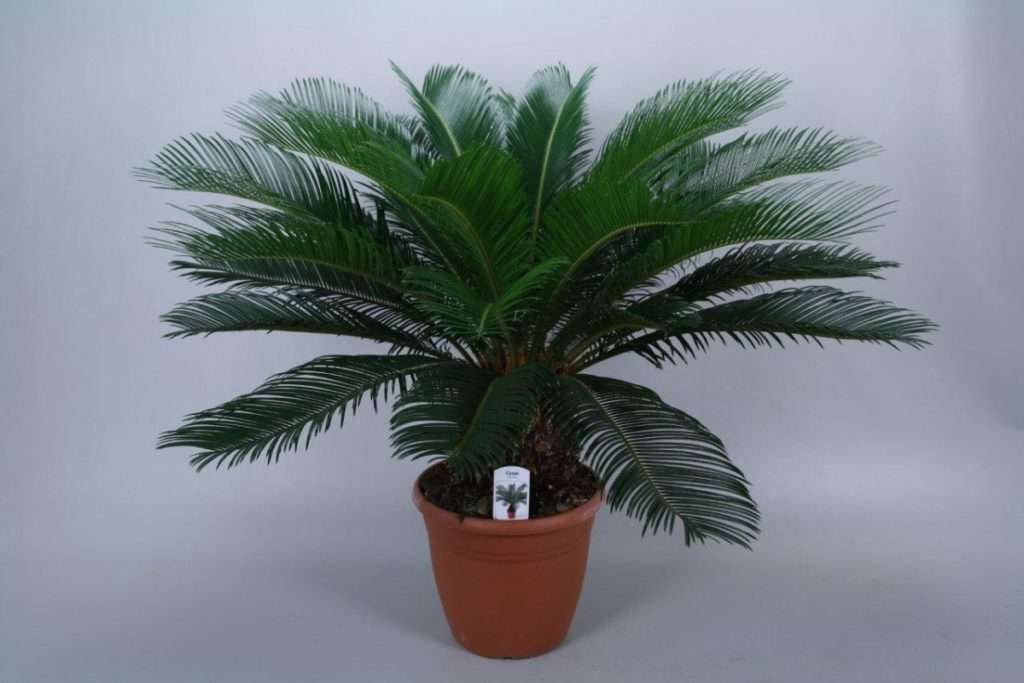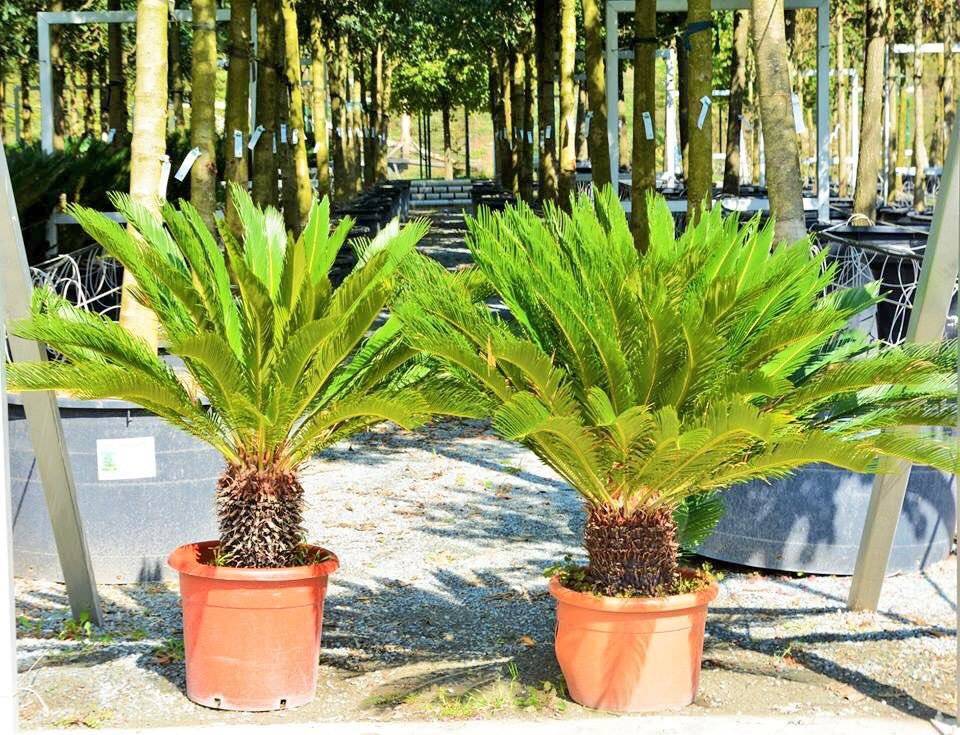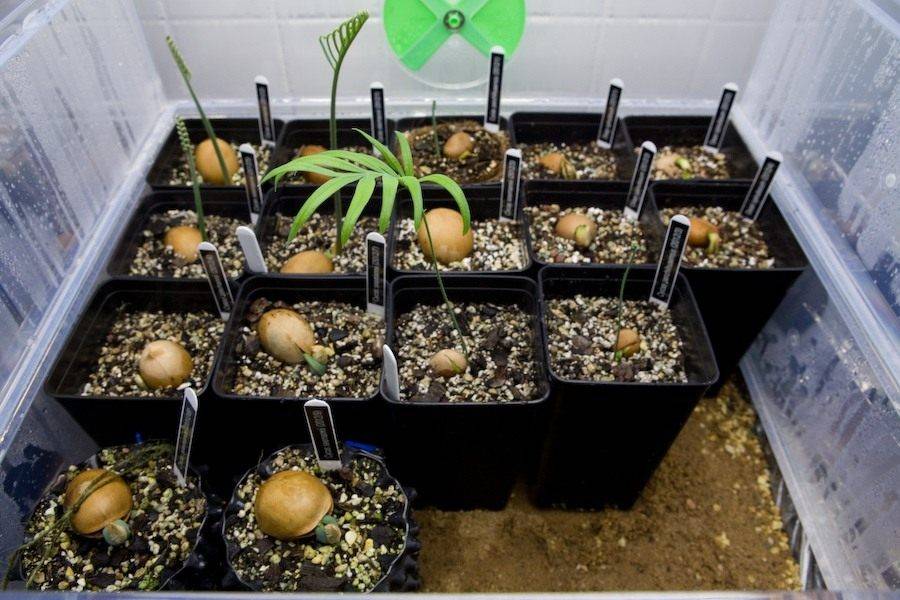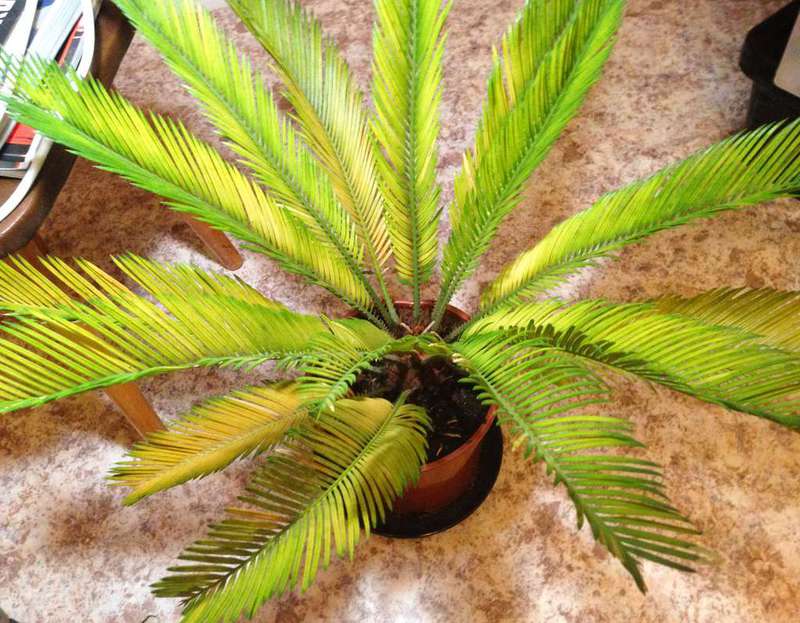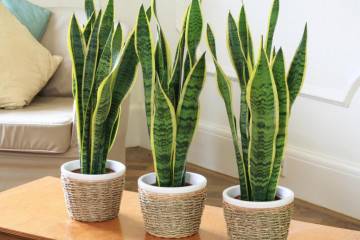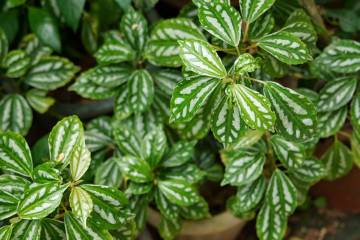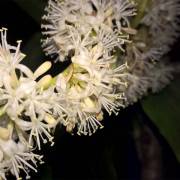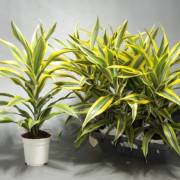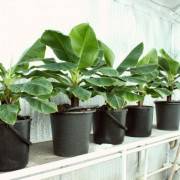Cycas revoluta - care and reproduction
Content:
A resident of the Japanese islands of Kyushu and Ryukyu, the cicas of the revolution has long ceased to be exotic. “Domashnaya Palma” fell in love with flower growers and settled in Russian apartments and offices. If you learn how to care for a cicada at home, you can grow a beautiful flower.
general characteristics
Cycas revoluta, also known as drooping cycad, belongs to the genus of sago palms, numbering about 90 species.
Plants have thick trunks with "scales" from dead foliage and feathery leaves located at the very top. Despite the external similarity, the drooping cicas has nothing to do with palm trees, but is a genus of the Cycadaceae family.
Among the relatives, reaching a height of 15 m, the revolution is the lowest. In nature, it grows up to 3 m, at home - up to 0.6-0.7 m. Thanks to this, the "small palm" can be used in the interior.
Conditions for growth
In order for the indoor "palm" to please with rich greenery, it is necessary to create the right conditions for keeping.
Illumination
The plant loves light, but suffers from direct sunlight. When choosing a place for a drooping cicass at home, you should give preference to the southern and southwestern side. The flower needs to be in the light for at least 4 hours.
In summer, the flowerpot should be taken out onto the balcony or terrace. When rearranging a plant, it must be borne in mind that it does not like sudden light changes.
Temperature regime
The optimum temperature for a cycad is 18 to 24 ° C in warm weather and 16 to 18 ° C in winter. For a short time, the plant can withstand temperatures up to +8 ° C.
Humidity
To ensure the full growth of cicas, the air should be humidified. The optimum humidity level is 70-80%.
Tsikas: home care
The cycad cannot be called capricious, but it requires some care. Compliance with the basic rules allows you to maintain the beautiful appearance of the plant.
Watering
The flower should be watered with water at room temperature, avoiding contact with the leaves and caudex ("cone"). The best option is to water around the circumference of the pot. The soil is moistened as it dries and depends on the season. From May to September, this is abundant watering (1-2 p. Per week); from October to April - moderate (1 p. in 10 days).
Top dressing
Top dressing is carried out monthly from May to October with organic mixtures (horse manure, mullein). Fertilizers with magnesium and potassium are not suitable for the "home palm". As top dressing, you can use complexes for palm, orchids and cacti.
Pruning
The plant needs pruning in two cases:
- the appearance of signs of the disease;
- dying off of old leaves.
Trimming is done as close to the trunk as possible.
Transfer
You need to transplant a cycad younger than 5 years old annually; an adult plant - every 5-6 years and in case of a lack of space.
During transplanting, remove the cicasa drooping from the container carefully, helping to separate the soil from the walls with a spatula. The new pot should be 2-3 cm larger than the previous one. The plant should be planted shallow, leaving a "bump" on the surface.
Ground requirements
The soil composition for the cycad is as follows: clay sod land, peat, leafy earth, humus, sand in a ratio of 2: 1: 1: 1: 1. Place 2-3 cm of gravel at the bottom of the pot, which will serve as drainage.
Reproduction of the cicassus drooping
You can propagate a flower in two ways: by seeds and by shoots.
Growing from seeds
In preparation for sowing, the seeds are soaked in warm water for 1 day, after which they are placed shallowly in the ground. The pot is covered with foil and placed in a warm place with a temperature of 30-32 grams. - a so-called greenhouse is being created. The germination process takes an average of 2 months.
When a green leaf appears, the germinated plant is placed in a separate pot.
Reproduction by shoots
Drooping cicus babies are formed on the caudex of the flower. After the leaves and adventitious roots grow on the shoot, it is cut off with a knife. The place of the cut on the mother trunk is sprinkled with activated carbon. During subsequent watering, water should be avoided on the "wound".
Before planting, the shoot is dried for 2 hours, after which it is placed in a new pot under the "cap". Rooting takes from 6 to 10 months. At this time, it is very important to observe the temperature regime (28-30 ° C) and maintain high humidity.
Difficulties of growing "decorative palm"
When caring for cicas at home, gardeners are faced with the following problems:
Rotting trunk
The disease is manifested by a change in the color of the leaves to brown and softening of the trunk, which begins to exude an unpleasant odor. The reasons may be improper watering or a fungal infection. To save the plant, the cicas should be removed from the pot, the rot removed, treated with fungicide and placed in new soil.
Color change
If a small number of leaf plates begin to turn yellow in a drooping cicassus, you should not worry, this is a natural process of foliage dying off. A change in the color of the entire crown indicates a lack of moisture or rotting of the "cone". In the latter case, it is necessary to remove the spoiled part and transplant the flower.
Cessation of growth
"Indoor palm" grows slowly, but a complete cessation of development signals a lack of nutrients or a violation of the conditions of detention.
The reason for the color change and wilting of the flower can be the appearance of the scale insects, spider mites and thrips. The use of actara, actillik and other drugs eliminates pests.
The cicus is revolutiona is a leisurely flower. To grow a full-fledged "palm", you need to make efforts for more than one year. However, the desire to have an exotic plant makes flower growers provide him with all the necessary conditions.
